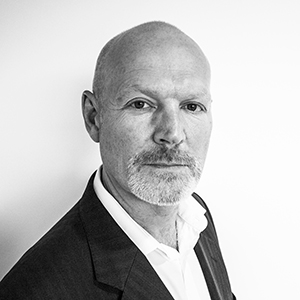Fidessa and Celent call for MiFID II clemency on dark pools
Regulators should consider carefully the implications of their actions, and not be too hasty to censure or restrict trading activity on dark pools, according to a report released by analyst firm Celent this week. The findings have been supported by senior financial services executives at Fidessa, who have called for investor choice to be maintained.
“Investors who are looking to avoid interacting with toxic and aggressive liquidity, usually from high-frequency trading firms, see great value in trading on these dark pools,” said the report. The document adds that not all dark pools are equal and recommends that regulators ensure the useful service they provide is not lost, and that differences between dark pools be taken into account.
Under the European Commission’s upcoming MiFID II legislation, broker crossing networks will have to become MTFs, meaning that they can no longer discriminate between participants but must open up to all entrants. Critics object that this could mean investors lose the freedom to expose their orders only to parts of the market they trust, such as other institutional investors, in a dark pool. Forcing the platforms to open up could mean long-term investors are exposed to predatory high-frequency trading firms, which prey on institutional investors trying to place large orders.
As part of the European rules, the Commission is also debating whether to mandate a volume cap mechanism, which would limit the maximum level of dark pool trading. In the US, regulators are exploring information sharing and boosting transparency about how dark pools operate. According to Steve Grob, director of strategy at Fidessa, the European debate reveals erroneous assumptions on the part of European lawmakers.
“Much of the regulation is influenced by a blanket view that trading in the lit is somehow inherently better than trading in the dark, and also a preference to protect the retail investor rather than the institutional investor,” Grob told Banking Technology. “Both assumptions are flawed. Off-exchange trading has always existed for large blocks of shares that were unlikely to be traded at a good price on the market. Also, they forget that institutional investors are essentially representing the interests of lots of retail investors.”
Celent observes that buy-side investors value dark pools because of the ability to trade only with other trusted buy-side investors, and because they can reduce their market impact. Dark pools typically match orders at the mid-point; users also save the cost of exchange fees. The fact that investors can gain better prices is one of the main factors in their recent rise, according to the analyst firm. Average trade sizes in dark pools are also typically higher than in the lit markets, ostensibly making them a better place to do business for the institutional buy-side trying to shift large blocks of stock. The only major downside is that there is a trade-off between taking a better price off-exchange and the delay in finding matching liquidity that may come from trading in a dark pool.
Dark pools accounted for 14.7% of total equity trading volume in the US in June, more than double the figure in 2008, according to Celent. In Europe, dark pools accounted for around 6% of total equity trading in July 2013 according to Celent. When the figure is viewed as a proportion of order book trading, it rises to 10.3%, according to figures provided separately by Thomson Reuters.
“The biggest problem is that there’s no way to measure the impact that regulation has had and the exact proportion of dark liquidity versus lit since the original MiFID,” said Grob. “You can’t manage what you can’t measure. Regulators talk about evidence-backed policy, but Fidessa’s fragulator is virtually the only tool that even measures the market. Imagine if the aerospace or health industries were making rules without any data on accidents. How can you make rules, without information? It’s frightening.”
While the European Parliament continues to discuss MiFID II, Grob notes that the last six months has seen a decline in the proportion of high-frequency trading activity across Europe – a trend that has coincided with a rise in institutional trading activity. Fidessa figures suggest that the dark MTFs run by exchanges and brokers such as UBS MTF and Goldman Sachs Sigma X have seen growth of 45% collectively over the same period. However, the volume traded on these platforms as a proportion of total trading activity was still only around 3%. Yet he contends that the information had been twisted and misused in the public debate over dark pools.
“That 45% number got completely misrepresented in the European Parliament and was passed around with a spin on it that didn’t reflect its true meaning,” said Grob. “Vested interests manipulate the figures. That’s the real threat to the stability and safety of markets, not dark trading activity. Anyone who imagines that MiFID II isn’t going to have unintended consequences is very naïve at best.”












































